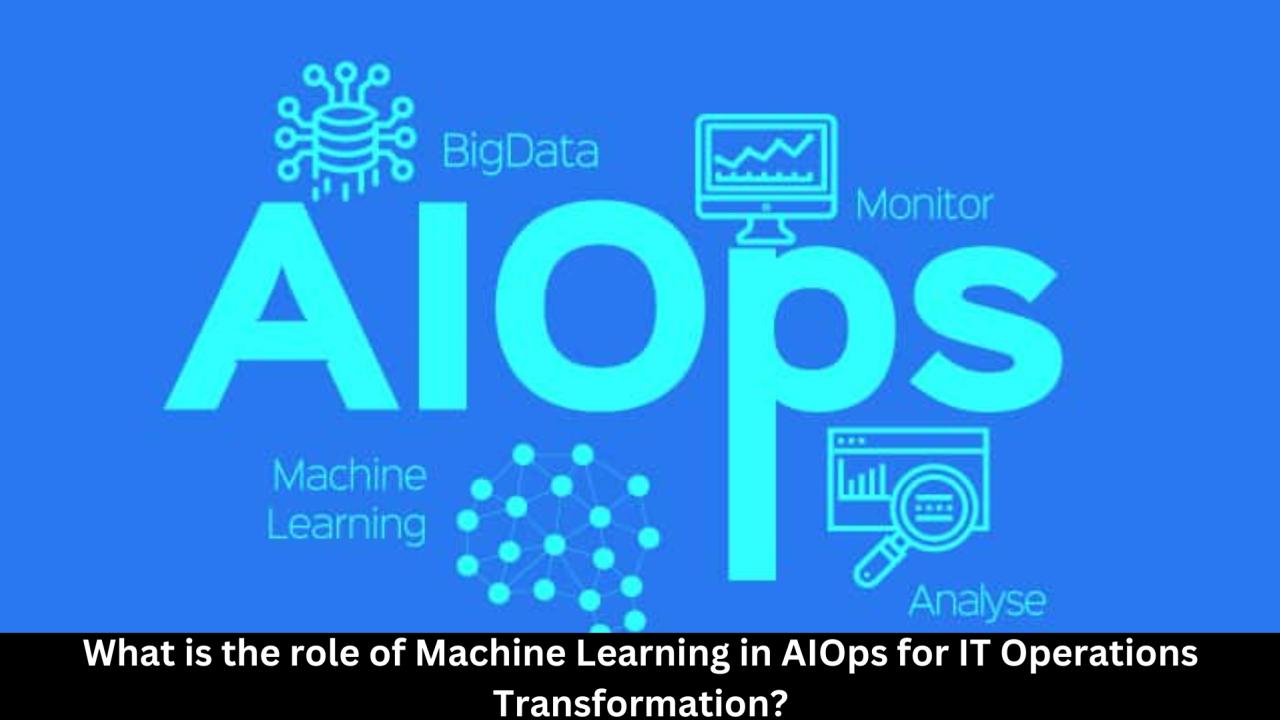The adoption of AIOps (Artificial Intelligence for IT Operations) is revolutionizing how businesses manage their IT infrastructure and services. AIOps integrates machine learning and artificial intelligence into IT operations to improve the efficiency of processes like monitoring, incident response, and automation. The role of machine learning in AIOps is crucial, as it drives the core functionalities like predictive analytics, anomaly detection, and automated decision-making.
In this blog, we will understand the roles of these Machine Learning algorithms in AIOps in order to Boost IT operations and see the evolution of AIOps security future trends, and its impact on DevOps & its CI/CD services.
What is AIOps?
AIOps stands for Artificial Intelligence for IT Operations, which involves the amalgamation of machine-learning algorithms and artificial intelligence to automate often excluded operations processes like event correlation, monitoring, incident management and automation.
AIOps help detect and solve IT issues earlier, provide visibility to potential outages before they happen, and even preempt problems before they are born. This leads to better uptime, happier customers and peak performance across all the layers of their IT estate.
How Machine Learning in AIOps Works?
Machine learning is the key to AIOps, which allows systems not only to learn from large volumes of data but also to implement pattern recognition and make real-time decisions. The primary service of machine learning within AIOps:
Predictive Analytics
One of the most significant applications of ML in AIOps is predictive analytics. Machine learning algorithms can use historical data and trends to predict future outcomes. This is important in IT operations as it will assist the department in predicting potential system failures or performance degradations that might lead to downtime.
Predictive analytics in AIOps allows organizations to be proactive. The result is that instead of letting problems happen, IT can predict them and rectify them long before services come to a halt. Not only does this lower downtime, but it also lowers aggregate operational expenses. By doing so, the service is that much more reliable and gorilla players that are providers of DevOps solution in particular benefit.
Anomaly Detection
Traditional IT monitoring has always consisted of thresholds, which means that in more complex and dynamic systems, this approach is not the right way to identify a problem. Machine learning is great at detecting anomalies since it can be used without any prescribed rules.
Anomaly detection using machine learning models that learn the normal behavior of systems allows for more easily flagging anything unusual. This can be particularly good at catching low-level, surprising bugs, which may never hit a limit but still turn disastrous if you really use the system fully. The issue with cybersecurity is the AIOps' future trends, where anomaly detection matters most in identifying cyber threats on time before they can mess around hard.
Automated Decision-Making
AIOps uses machine learning for autonomous decision-making, which significantly decreases human intervention in solving everyday problems. When an anomaly is detected, the system can take proactive measures like restarting a service, reallocating resources, or simply applying a patch.
Not only does this automated decision-making capability enable instantaneous responses, but it also takes some of the load off of an IT team. Machine learning in AIOps, especially when it comes to handling large-scale environments that churn out several thousand events a day, helps filter the noise and processes only critical incidents and duly revert.
AIOps and DevOps Integration
AIOps needs to bridge with DevOps CI/CD services (Continuous Integration and Continuous Delivery), which is becoming increasingly important in present-day IT operations. AIOps gives DevOps a necessary push by bringing in predictive analytics and anomaly detection for faster CI/CD pipelines. Here's how:
Automated analysis: Machine learning algorithms in AIOps can automatically analyze data from all phases of the CI/CD pipeline. AIOps also promotes adding stability to the usual chaos of a development and deployment process by identifying bottlenecks, performance issues or risks way before, something Ankash points out as degradation.
Incident Prediction and Prevention: Whenever we fail to deliver the software smoothly due to various unpredictable reasons, it creates chaos for the delivery of work in a DevOps setup. By enabling predictive analytics, AIOps helps DevOps teams anticipate potential incidents and take steps before they grow, which ultimately leads to better releases.
Dynamic Resource Allocation: AIOps supports the dynamic allocation of resources as per the requirement of the DevOps pipeline. By recognizing patterns in multiple data points over a long period, machine learning algorithms are able to recognize when exactly resources need to be allocated, giving detailed insights that help reduce wastage while increasing operational efficiency.
This allows any DevOps solutions provider to offer integration with AIOps, which, as a result, keeps the CI / CD pipeline accurate, secure, and resilient and delivers excellent applications to customers.
AIOps Machine Learning Benefits
Machine learning for AIOps in IT operations provides several advantages:
Better Decision Making: Machine Learning helps analyze large sets of data and provide actionable insights, which can empower quicker and smarter decision-making at the right time.
Quicker Incident Response: Using automated decision-making, AIOps can rapidly detect, analyze and solve incidents, reducing recovery time swiftly and ensuring minimal business disruptions.
Operational Efficiency: By automating mundane tasks and deploying resources more smartly, AIOps ensure a higher level of IT operations efficacy, which in turn allows the operation team to focus on other strategic areas.
Predictive performance analytics and abnormality identification provide visibility of when issues are going to arise and where they have already happened, giving early warnings/action items to act on (proactive IT management).
AIOps Security Future Trends
As AIOps evolves, security is emerging as a premier concern. The AIOps security future trends is in the rapidly evolving artificial intelligence landscape, where it can detect some new and even more obscure security threats using increasingly advanced machine learning algorithms. AIOps can identify potential threats by analyzing the massive amounts of data generated, such as uncharacteristic login behavior or network traffic.
AIOps will simplify the process of responding to security threats in the future. Given that AIOps can detect threats in the network, action might not even need to be taken manually — it will shut down any assets it finds compromised or isolate the threat until manual patching can take place. This will also be important for cybersecurity, which is becoming more challenging and common.
Conclusion
It does magic by applying predictive analytics, anomaly detection, and automated decision-making, which are made possible thanks to machine learning. With these capabilities, businesses can better manage their IT infrastructure to minimize downtime, increase time-to-incident resolution and even prevent problems before they happen.
The integration of AIOps ensures performance and reliability benefits to DevOps solutions providers as well as companies offering DevOps CI/CD services. Moreover, this is also a future trend in AIOps security approaches, where machine learning forms the backbone of shaping IT operations and helping organizations anticipate operational obstacles as well as cybersecurity threats.
Today, this is not just a luxury but a changing necessity for AIOps to include automation, predictive insights, security, and machine learning in design principles and the implementation of machine learning algorithms.















